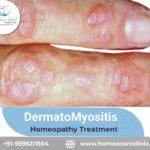Introduction
Tinea versicolor, also known by the name pityriasis versicolor, is among the most common fungal infections of the skin caused by the yeast Malassezia. It basically involves the appearance of areas on the skin that are discolored regarding color, thereby leading to discomfort and embarrassment for those affected.
Causes of Tinea Versicolor
Tinea versicolor essentially is a medical condition ascribed to an overgrowth of the Malassezia yeast on the skin. Contributing factors include:
- Humid and Warm Environments: It occurs in the tropical region characterized by moisture and warm temperatures.
- Oily Skin: Overproduction of oil creates a good medium for yeast.
- Sweating: Moisture from the sweat promotes the proliferation of yeast.
- Weakened Immune System: The patient with reduced immunity makes them victims of fungi
Symptoms of Tinea Versicolor
The most apparent indicator or symptom of tinea versicolor is the coloration of discolored spots on the skin which may be:
- Lighter or darker than surrounding skin and often itchy
- Scaling and flaking in the area affected
- Characterized by mild redness or irritation
- Worsened by hot, humid weather
Preventive Measures
Prevention of tinea versicolor is achieved through good hygiene and avoidance of factors that would increase the risk of this condition:
- Regular Cleansing: Preserve the cleanliness of the skin by washing it with soap and water.
- Avoid Excessive Moisture: Dry immediately after bathing. Avoid excessive sweating.
- Sun Protection: Apply sunscreen to avoid sunburn, which makes the patches appear worse.
- Avoid Oily Products:: Keep away from greasy topical ointments as they can provoke the growth of yeast.
- Loose Clothing: Wear loose clothing, especially in warm, humid climate
Homeopathic Treatment of Tinea Versicolor
Homeopathy treats tinea versicolor by dealing with the root cause through the restoration of the natural healing system in the human body. The most commonly used remedy for this condition is:
- Sulphur: It is best suited for itching and burning sensations and it is when people have dirty-looking skin with excessive sweating.
- Sepia: Indicated when brown, scaly patches worsen in the sun. Most often indicated for persons of melancholic temperament.
- Graphites: Indicated when skin is dry, scaly, and oozing; especially if prone to eruptions and obese.
- Arsenicum Album: Indicated when there is intense burning, restlessness, and desire for warmth. Suitable to anxious, fearful persons.
- Thuja Occidentalis: Indicated in dry, scaly patches and warts, especially in those with a vaccination.
Homeo Care Clinic focuses on the comprehensive management of tinea versicolor with its customized homeopathic treatment plan for each patient. The treatments offered here attempt to handle the underlying causes and symptoms on a broad level. In order to address this condition correctly, with the correct dosage and the correct treatment period, proper advice from a well-qualified homeopathic doctor needs to be sought. Here, in Homeo Care Clinic, holistic care is given to dealing with various diseases, therefore, their treatment with plans is allocated as per every individual patient’s requirement.
In conclusion, Homeo Care Clinic offers a holistic approach to treating the disease. The remedies mentioned above can treat the underlying causes of the condition and offer relief from the discomfort. However, it is important to consult a qualified homeopathic practitioner for the correct dosage and duration of treatment. Homeo Care Clinic provides comprehensive care for various ailments and offers customized treatment plans based on individual requirements.
To schedule an appointment or learn more about our treatment, please visit our website or give us a call +91 9595211594 Our friendly staff will be happy to assist you. If you’re searching for the best homeopathy doctor, we are here to help.
Follow us on Facebook, Twitter, and Instagram for valuable insights into the world of homeopathy and holistic health.
Facebook – https://www.facebook.com/homeocareclinicpune
Instagram – https://www.instagram.com/homeocareclinic_in
Website – https://www.homeocareclinic.in
Chat with the best homeopathic doctor privately
If you have any queries regarding your disease or any symptoms, Click to send a WhatsApp message. Our best homeopathy doctor will be happy to answer you.
Book an Appointment
If you want to visit our clinic, Click to book an appointment.
Online treatment
If you are a busy professional, or you are living in a remote town or city, with no best homeopathic doctor near you, Clickhere to start an online homeopathic treatment with the world’s exclusive, most experienced, and best homeopathic clinic, managed by Dr. Vaseem Choudhary world-renowned homeopathic doctor expert.






